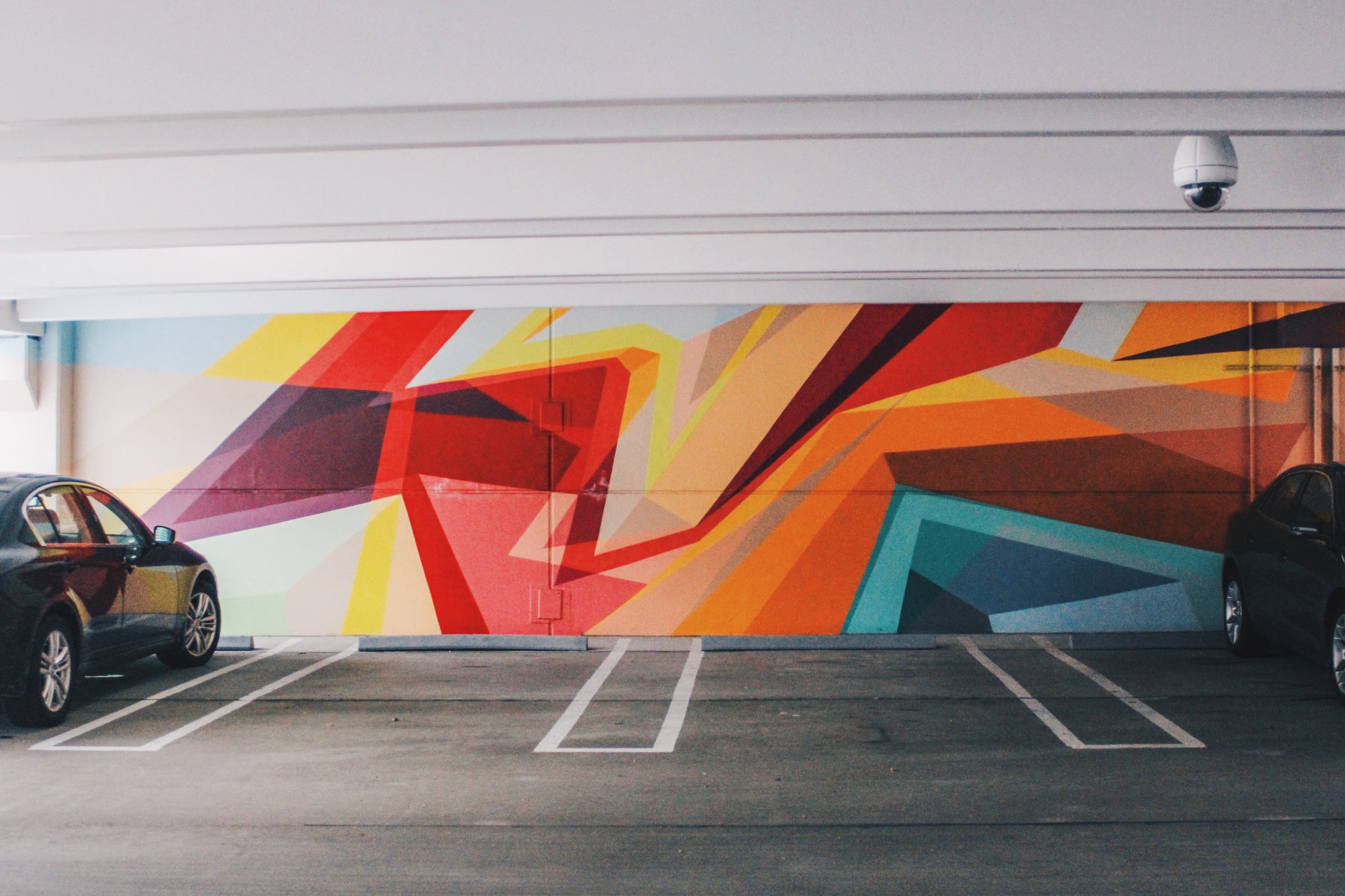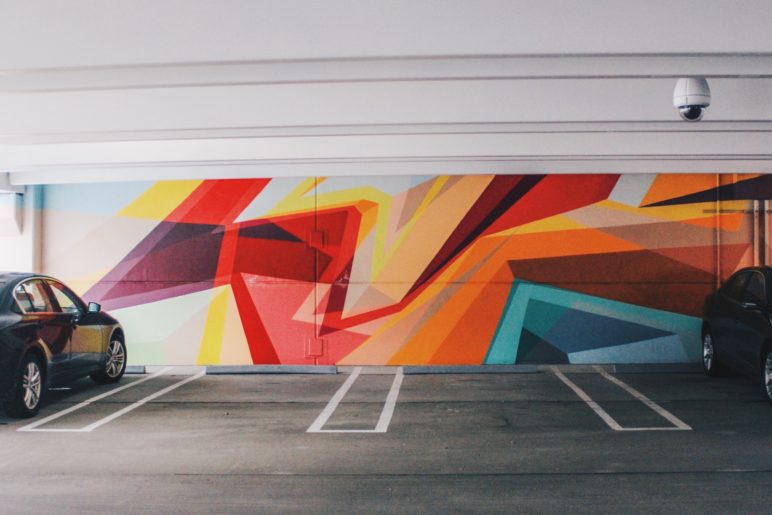When Biliana Velkova and her husband bought a loft in a building on former industrial land near Vancouver’s downtown core last summer, they knew they weren’t going to get a parking stall with it. But that didn’t matter to them. It was the area and the price that were the prime factors in their decision.
The Artech project, built in 1994 as an experiment in creating more affordable housing for the city’s artists in the industrial False Creek Flats area, was built with only one parking spot for every two units—an unusual concept at the time. Velkova’s loft was one of those without an associated parking spot.
That was fine by Velkova. The 42-year-old city planner, who works in a Vancouver suburb, hasn’t had a car most of her life. She has one temporarily now because she and her husband are renovating their unit.
“I drive today, but eventually we’ll get rid of it. Once we go back, I’m happy to bike.” And, someday, when the pandemic is over, to take transit again. Her husband still cycles to his job at the University of British Columbia, as he always has.
Velkova’s situation is about to get much more common in Vancouver if an initiative to significantly alter the city’s current parking rules goes forward.
Vancouver could move from over-parking to “open option parking”
The city’s engineering department, spurred on by a council motion in September urging the move away from over-parking as a priority, is looking at the feasibility of getting rid of any parking rules that stipulate the minimum number of stalls a developer is required to build for any project in the city. That was reinforced in November when city councilors approved an aggressive new “climate-emergency response plan” that includes new parking strategies as part of the toolset. On-site parking spaces become fully optional, if all goes according to plan. Choices like Velkova’s would become legal anywhere.
The city is calling the approach an “open option parking” system.
To discourage car owners with no reserved stall like Velkova from relying entirely on public streets to find parking, the city would also start controlling access to street parking spots. Every resident who wants to park their car on a city street would be required to buy a parking permit from the city.
That’s not just a parking-control mechanism. It’s also meant to be a new signal to everyone in the city that roads are not free space or a right to free car storage that comes automatically with buying a plot of land, even though that’s how many people have registered it subconsciously for decades.
At the moment, Vancouver, like many other cities, has a baseline requirement of about one stall for every unit in a residential building and one stall for each 650 square feet or so of office space, with a host of varied rules for other kinds of commercial uses.
If and when the changes go into effect, Vancouver would become the second city in Canada—after Edmonton, which made on-site parking optional in August—with such a policy since early in the automotive age. A handful of other cities in North America, including Portland, San Francisco, Buffalo, and Mexico City, have recently re-legalized building housing without on-site parking.
While many other metropolises—Vancouver, Seattle, San Francisco, Los Angeles, and even Houston among them—have recently reduced or eliminated parking mandates in a few compact, walkable, transit-rich zones in their cities, few have gone as far as eliminating over-parking requirements everywhere. As of January 2019, Vancouver eliminated parking minimums downtown and allowed builders to reduce required parking elsewhere if they provided alternatives like parking for shared cars, transit passes, or bicycle-storage facilities.
The true costs of excessive parking mandates—from building costs to pollution
Edmonton, in the heart of an oil-industry-dependent province, exemplified the mindset shift emerging among many city engineering and planning departments.
“Parking is a powerful, but often hidden, force that shapes how our communities are designed and influences every aspect of how people live, work and move around,” said Kim Petrin, Edmonton’s branch manager of development services, by email. “Designing cities around parking amenities instead of people can result in wasted space and wasted business opportunities.”
The city estimated, in advance of its decision, that there was 50 percent more parking in Edmonton than was needed.
Parking regulations may sound boring to most people. But the study of parking and the idea of eliminating parking minimums have become buzzy urban-planning topics in recent years, in part driven by pioneering work by people like UCLA urban-planning professor Donald Shoup. His 2005 book, The High Cost of Free Parking, woke many people up to the enormous amounts of space dedicated to car storage—up to three spots for every vehicle in the US—as cities increasingly mandated parking minimums from the 1950s on.
Rethinking parking rules’ broader impact on communities and behavior has drawn interest not just from city planners but from environmentalists keen on strategies to reduce fossil-fuel use, housing advocates looking for ways to reduce the cost of housing, and transit managers seeking to foster maximum use of their systems.
In Metro Vancouver, planners have done two major studies, the most recent one in 2018, documenting the high rate of unused parking stalls in the region’s apartment buildings. It found that, among the 70-plus buildings studied with a range of unit types, the over-supply of parking ranged from 35 to 42 percent. The highest numbers of unused stalls were in strata apartments, especially for smaller units. The lower rate of over-supply was in rentals.
Parking rules keep builders from building more homes
The push to reduce the excessive space required for car storage is also being driven by developers in the most expensive cities, for whom providing parking has become an enormous expense, on top of many factors that are driving condo and rental-apartment prices to increasingly unaffordable heights.
“Anything beyond two levels [of underground parking] is really expensive,” says engineer Peter Joyce of Bunt & Associates, a company that does the parking and transportation planning for many of the major developers in Vancouver. “Excavation is a really significant cost, there are mechanical systems needed to ventilate, and construction takes longer. The less parking you provide, the sooner your building is complete.”
He estimates it costs as much $65,000 to $70,000 per parking stall for some buildings. And he rarely hears back from his clients that they don’t have enough parking. “Most times, I hear that we have over-parked the building.”
Those numbers might lead casual observers to speculate that, if left to their own devices in cities that eliminate parking minimums, developers will build no parking at all in future buildings, thereby forcing office workers and apartment-dwellers to engage in car-to-car combat on the streets as they compete for limited parking space.
But, it turns out, that’s too big an assumption in the complicated world of parking math.
A recent academic study delved into what happened in Seattle after it adjusted or eliminated parking minimums in 2012 in an effort to spur more construction of needed housing.
The results were dramatic: 59 percent of Seattle apartment homes built from 2012 to 2017 were in buildings that would have been illegal under the old parking rules.* That comes out to about 35,000 homes, 9.5 percent of the City of Seattle’s entire existing housing stock.
Across all the 868 new buildings studied, most included less parking than they otherwise would have. But most had some. Two-thirds of projects had no parking requirements. Only a fifth ended up with no parking at all. Still, there were huge reductions overall.
“Our analysis demonstrates the sizable impact of the reforms, which in turn suggests the strong role that minimum parking requirements play in development decisions,” wrote professors CJ Gabbe and Gregory Pierce, along with Seattle city planner Gordon Clowers. “In the urban centers, urban villages, and transit-oriented locations, developers built 40 percent less parking than would otherwise have been required. This amounted to 17,886 fewer parking spaces across 26,348 units subject to reduced parking requirements. Assuming each parking space would have cost $30,000 to build, the reform saved $537 million in direct construction costs over five years—more than $20,000 per unit—which likely benefited both housing developers and consumers alike.”
How lifting parking mandates plays out on the street
Gabbe acknowledged that one piece of research the study didn’t undertake was whether there were any spillover street parking effects in the neighborhoods around lower-parking buildings. But he speculated that, because they were built in areas that already had metered or restricted street parking, it would discourage most residents from thinking they could find a place on nearby streets if they didn’t have a stall in the building.
But that kind of conflict could arise as parking minimums are eliminated in whole cities, including in the sometimes very suburban-feeling parts of cities like Vancouver where there are currently no parking restrictions or good access to transit. This question prompts many planners and engineers to suggest that there needs to be some kind of control on street parking to make the parking-minimum system work.
Vancouver’s engineering department, which is supposed to come up with a comprehensive report on how to handle all of that in the next few months, is trying to figure out all the algorithms that will play out in different locations, with 22 distinct neighborhoods and sub-sections, many of them with their own parking rules and very different levels of transit service. There are currently about 300,000 on-street parking spots in Vancouver, nearly a third of all road space, but only 11,600 are metered. About 10 percent of the road space requires a residential parking permit.
Lifting “over-parking” mandates successfully requires complementary solutions
“If this expands city-wide, we will need a better transportation-management system because we don’t want people driving around the streets [searching for parking spots],” said Alina Cheng, the city’s director of parking management. “Honestly, this is going to require a huge amount of work.”
(One possible strategy Vancouver planners have not yet thrown into the mix is to spend street parking permit revenue on improvements to the neighborhood where they are collected—a scheme known as a Parking Benefits District.)
One clue about what might happen comes from the builders themselves, who say that eliminating minimums will, yes, mean less parking for some buildings. But not for the higher-end ones where people paying well over a million for a home expect all the amenities, including primo car storage.
Bruno Wall, president of the Wall Financial Corporation, which has built thousands of condos and rental apartments in the city, was pleasantly surprised to discover that he would only have to build 30 stalls in a potential 307-room hotel the company is pondering for a downtown location (those 30 would be required for people with disabilities and for deliveries.)
That makes sense to him, with so much transit, ride-hailing, bikes, valet service and everything else around that location. “In that scenario, I could see it working.”
But for other projects, he wouldn’t go so low. Because, for example, people buying expensive condos usually want a parking spot. Or two.
“It really depends on your unit mix,” he added. “I could see bifurcating the parking from the unit and maybe you don’t give any parking to the one-bedrooms or studios.”
What Wall does like about the potential “open option” policy is the ability it gives builders to make an informed decision, instead of just following a one-size-fits-all rule.
“It gives the developer the flexibility to think about the market.”
Hani Lammam, the vice-president for acquisitions and developments at Cressey Development Group, a Vancouver company that builds a lot of rental apartments (along with a few recently in Seattle) as well as condos and office space, also says there are multiple answers.
“When we build rental, we definitely take advantage of any parking relaxation,” he said. In addition to the downtown, Vancouver has moved to allowing fewer parking spots in rental buildings that are on good transit corridors, usually one stall for every two units.
But Cressey Development Group is building more parking than city minimums require at its condo projects and in an office building that’s going into the Mount Pleasant industrial area, where they feel like parking will be a selling point as tech businesses, breweries, and many others have piled into the hip, booming neighborhood across False Creek from the downtown peninsula.
Lammam, like many others, thinks that if the city is going to eliminate parking minimums everywhere, it’s also going to have to figure out what to do about managing parking everywhere.
“It must take a proactive approach to on-street parking. Otherwise, people will park on the street.”
Joyce agrees: “I suspect any attempt to reduce parking minimums will have a corresponding need to restrict resident [on-street] parking.”
And Pierce, one of the authors of the Seattle study and a researcher in how much money cities sink into building their own parking garages, says that could be done through district controls.
“The way to go there is to have residential parking districts that can help manage on-street supply and manage new cars in an area.”
Overcoming community opposition
That’s a lesson Vancouver’s engineering department has learned a few times in the past 20 years. One of its problem parking areas for years was the very dense West End, the residential area near the central business district—one of the continent’s poster children for downtown urban living. A study showed that people were buying resident-only parking permits and parking on the street, even when they had designated parking stalls in their buildings. To solve the problem, the annual cost of a permit was raised from around $78 to $380 in 2017. It is now almost $400, but that’s still far less than market rates in the mid-$100s per month for off-street spaces.
Alina Cheng’s team in Vancouver will need to prove to existing residents that the new buildings will not result in a flood of new parkers on local streets.
Public hearings for new multi-unit building in Vancouver invariably bring on a torrent of concerns about parking, with opponents expressing their fears that the residents of the new building will jam up nearby streets with their cars.
Gabbe said that, in Seattle, a lot of work went into community outreach and conversation before the parking rules were changed in 2012.
“That was able to lessen community opposition.”
One of the topics that will likely be up for debate is what will replace the car parking.
Over-parking our cities, that odd misallocation of space has resulted in one of the strangest urban anomalies of the 21st century: cities where cars have more guarantees of secure housing than people do.

Engineer Peter Joyce has seen that, as Vancouver has eliminated the minimums for car-parking in some zones, it has increased its requirements for other transportation amenities such as transit passes, car co-op spaces, showers, bike storage, bike racks, or, in some cases, actual bikes. Though the costs of such requirements will negate some of the affordability benefit resulting from the costs saved by not building parking.
There’s been no research done on which amenities are the most effective and useful. It’s something Joyce’s company is hoping to devote some time to studying before Vancouver moves on to its city-wide parking-optional phase.
But, whatever is worked out, people who study the issue agree the key is combining better alternatives to the car with eliminating all of the excess car-storage space that takes up so much valuable room in cities. Requiring unnecessary over-parking no longer makes sense.
That odd misallocation of space has resulted in one of the strangest urban anomalies of the 21st century: cities where cars have more guarantees of secure housing than people do.
*Editor’s note January 2023: We corrected this sentence’s calculations from 56 to 59 percent.












TODD LITMAN
Well done!
A good source of information is Strong Town’s “Ending Parking Minimums” (www.strongtowns.org/parking).
Also see the Congress for New Urbanism’s “Project for Code Reform” (www.cnu.org/our-projects/project-code-reform ).
Alexander
Great article. But I’m disheartened to see American spelling imposed on a Canadian writer. “Councilor”? “Neighborhood”? Francis Bula, like any other Canadian, spells them “councillor” and “neighbourhood” on her own blog, so I have a hard time believing that she voluntarily spelled à la américaine for this article. The Sightline Institute markets itself as a bridge of inter-cultural equality across Cascadia; not just an American publication that reports on Canada, but a joint project shared by all citizens of Cascadia. That is why it is unfortunate to see Sightline imposing American hegemony even if in such a subtle and insignificant way. It is unfortunate to see even Sightline editing out any trace of foreignness, but not sadly surprising.